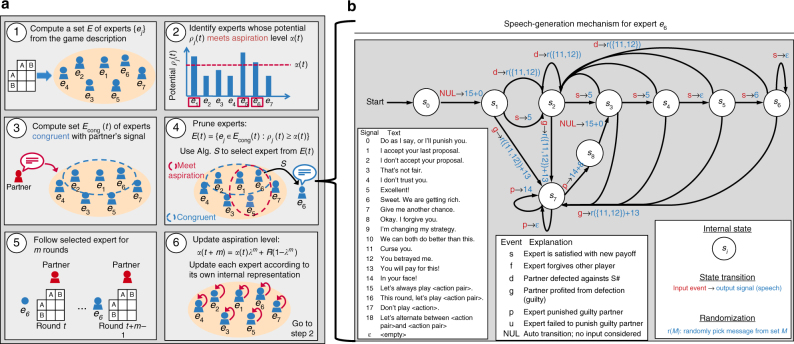Fig. 3.
An overview of S#. S# extends S++37 with the ability to generate and respond to cheap talk. a S#’s algorithmic steps. Prior to any interaction, S# uses the description of the game to compute a set E of expert strategies (step 1). Each expert encodes a strategy or learning algorithm that defines both behavior and speech acts (cheap talk) over all game states. In step 2, S# computes the potential, or highest expected utility, of each expert in E. The potentials are then compared to an aspiration level α(t), which encodes the average per-round payoff that the algorithm believes is achievable, to determine a set of experts that could potentially meet its aspiration. In step 3, S# determines that experts carry out plans that are congruent with its partner’s last proposed plan. Next, in step 4, S# selects an expert, using algorithm S34,60, from among those experts that both potentially meet its aspiration (step 2) and are congruent with its partner’s latest proposal (step 3). If E(t) is empty, S# selects its expert from among those experts that meet its aspiration (step 2). The currently selected expert generates signals (speech from a pre-determined set of speech acts) based on its game-generic state machine b. In step 5, S# follows the strategy dictated by the selected expert for m rounds of the repeated game. Finally, in step 6, S# updates its aspiration level based on the average reward R it has received over the last m rounds of the game. It also updates its experts according to each expert’s internal representation. It then returns to step 2 and repeats the process for the duration of the repeated game. b An example speech-generation mechanism for an expert that seeks to teach its partner to play a fair, pareto-optimal strategy. For each expert, speech is generated using a state machine (specifically, a Mealy machine70), in which the algorithm’s states are the nodes, algorithmic events create transitions between nodes, and speech acts define the outputs

